Hurricane Kyle has been kind to us…at least so far. The sea was not bad last night, and sleep was possible. I’m lucky that I am pretty sea worthy and do not succumb to sea- sickness too readily. At 7 am it is overcast but apparently the barometer is rising. The water temperature is 2 degrees centigrade and the air a balmy 6 degrees.
We are anchored off Agvituk or Hopedale—the place of the whales. Originally, Agvituk was an Inuit settlement. Today Hopedale, renamed by the Moravian missionaries who came here in 1782, is the legislative capital of Nunatsiavut. It is a community of about 650. Nearly 90% are protestant.
The Moravians established their community at Hopedale to convert the Inuit to Christianity. Their complex of buildings is the oldest wooden structure east of Quebec City.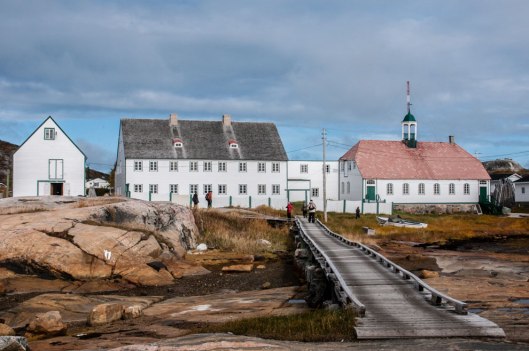 In large part, these buildings were brought from Europe prefabricated and were reassembled on their present site. Today they have been designated a National Historic Site.
In large part, these buildings were brought from Europe prefabricated and were reassembled on their present site. Today they have been designated a National Historic Site.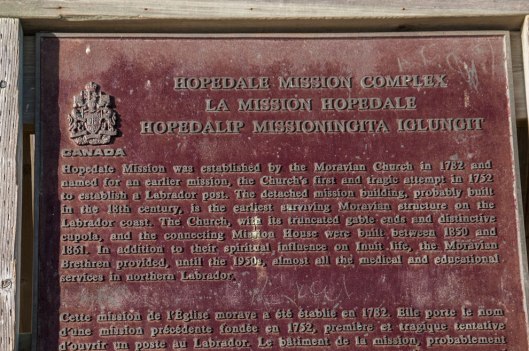
As I come ashore, the presentation of the Mission is much the same as it was two hundred years ago. The church is still active. Now the connecting buildings house a museum and interpretative center full of artifacts and documents dating back to the 1700’s. Its white pews and immaculate floors speak of the care that it receives to this day.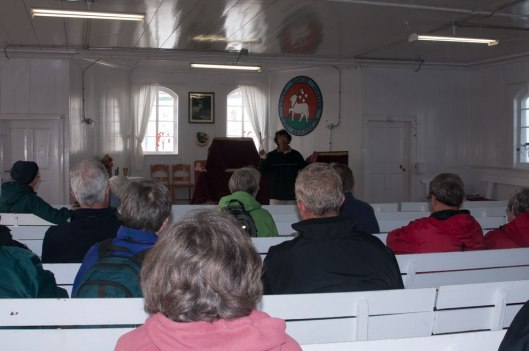
Hopedale is smaller than Nain but similar, at least to my southern eye. I walk the streets where still more puppies with attitude seem to abound.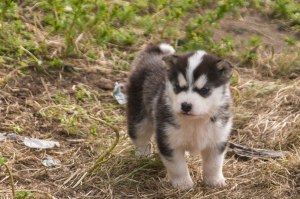 Mounds of poles,
Mounds of poles,  traditionally used for the drying of fish, stand waiting. The land and sea melt together in a flurry of fall colours.
traditionally used for the drying of fish, stand waiting. The land and sea melt together in a flurry of fall colours.
I head up to the Amos Comenius Memorial School along with the others from the ship. All grades are taught in this one facility. The road is gravel and is one of those that serves the village but doesn’t lead to the outside world. A small airport provides the fastest way to get to Goose Bay. The school is up a hill that offers a good view out over the water if one takes the time to turn around. Locals are moving to the school with us as a program of song and Inuit games will be provided for all of us in the auditorium.
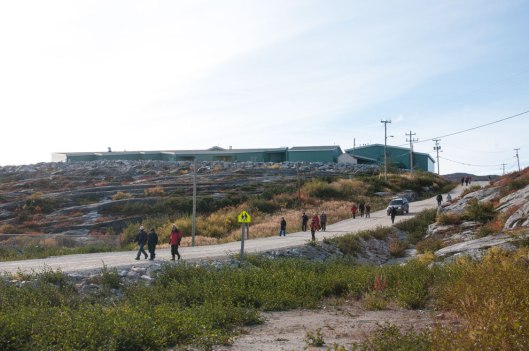 It’s one of the special features of Adventure Canada trips that there are many opportunities for travelers to interact with people who live in remote communities. I find it is one of the best ways to increase my understanding of my country and its multiple dimensions. Connecting with people first hand builds understanding.
It’s one of the special features of Adventure Canada trips that there are many opportunities for travelers to interact with people who live in remote communities. I find it is one of the best ways to increase my understanding of my country and its multiple dimensions. Connecting with people first hand builds understanding.
In the auditorium, the kids are pumped and get even more so as they interact with us. I show them my camera and with their permission and that of their teachers, they take pictures and I take pictures of them. Maybe they will remember the crazy lady that lay on the floor and took a shot as they huddled in a circle. It was fun!
They sang. The group clapped. Some of the older students played Inuit games that are simple but simply hard. I’m thinking that precision, agility and just plain skill are needed to hit a ball with ones foot when the ball is hanging several feet off the floor that you are actually laying on! It’s difficult to describe but trust me, it looks hard!
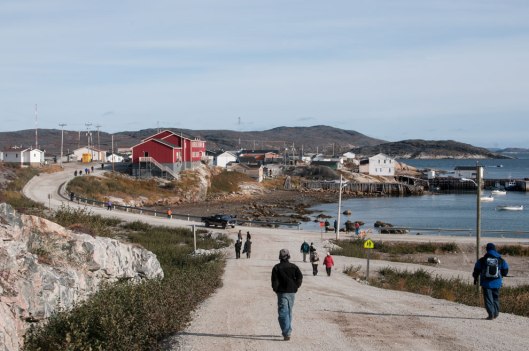 When the performance is over, I start down the hill to the harbour area but not before I look uphill
When the performance is over, I start down the hill to the harbour area but not before I look uphill in search of the joint US-Canadian airbase that is somewhere in the hills above town. It was abandoned in 1968 and only the non-military communication tower remains. The base was originally built as part of the Mid Canada Line, one of three systems (the others being the Pinetree and DEW Lines) that were intended to protect Canada and America during the cold war through early detection of incoming Soviet bombers. The station in Hopedale was the most easterly in the system. Now that the facility has been deactivated, the cleanup is underway. Here and across the north everything from damage to the tundra through the use of off road vehicles producing melting permafrost, depletion of fish stocks, agitation of caribou because of non-seasonal hunting and a general negative impact on the economy, has been blamed on the building and maintenance of the early warning systems. Cleanup takes years.
in search of the joint US-Canadian airbase that is somewhere in the hills above town. It was abandoned in 1968 and only the non-military communication tower remains. The base was originally built as part of the Mid Canada Line, one of three systems (the others being the Pinetree and DEW Lines) that were intended to protect Canada and America during the cold war through early detection of incoming Soviet bombers. The station in Hopedale was the most easterly in the system. Now that the facility has been deactivated, the cleanup is underway. Here and across the north everything from damage to the tundra through the use of off road vehicles producing melting permafrost, depletion of fish stocks, agitation of caribou because of non-seasonal hunting and a general negative impact on the economy, has been blamed on the building and maintenance of the early warning systems. Cleanup takes years.
A new legislative building is also being built in Hopedale. This new assembly will sit in contrast to the Moravian Mission that dominates the landscape. It will have Labradorite* tiling and seal skin seating.
Back on board, I find I am coughing and blowing my nose like there is no tomorrow. I hear singing in the lounge but I just want my bunk.
My nose and eyes run all night, but, oh well, I was awake anyway as the seas were rougher as we headed in a more or less south easterly direction towards Hamilton Inlet and the town of Rigolet. In the morning, I take a mind over matter approach as I really don’t feel well. I help my roommate carry her luggage to the deck using for disembarking the vessel as she has to fly out from Rigolet. (Later we will lug it back to our cabin as the weather prevents her from leaving for Happy Valley).
 I dress warmly and stuff my pockets with cough candies and Kleenex before heading for the Zodiac line up. In the rain, I make my way to the community center
I dress warmly and stuff my pockets with cough candies and Kleenex before heading for the Zodiac line up. In the rain, I make my way to the community center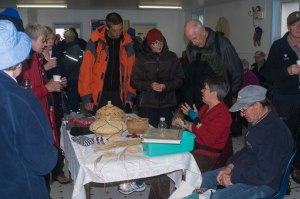 to listen to fiddle tunes, songs in Inuktitut, Greenlandic and English. Residents demonstrate basketry and other crafts. Feet fly and there is a sense of fun as the fiddlers lead with a reel.
to listen to fiddle tunes, songs in Inuktitut, Greenlandic and English. Residents demonstrate basketry and other crafts. Feet fly and there is a sense of fun as the fiddlers lead with a reel. 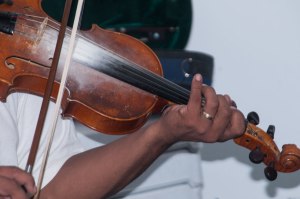 Coffee, bakeapple jam and bannock hit the spot before we have to head out in the rain.
Coffee, bakeapple jam and bannock hit the spot before we have to head out in the rain.
Back in 1735, Rigolet was founded by a French Canadian fur trader, Louis Fornel. It remains an isolated community but it is accessible by a snowshoe trail and by water. In addition, there is a 4.4 kilometer board walk that connects it to Burnt Cove. It seems unreasonable that I would have missed this, but I did!
If I had felt better, and if the weather had been more inviting, there were lots of outdoor things to do in Rigolet from fishing and whale watching to berry picking or duck hunting. The Heritage Society has restored the 1876 net loft and a replica of Lord Strathcona’s home has been rebuilt. Strathcona was formerly known as Donald Smith when he came to work for the Hudson’s Bay Co. His home, dubbed “the grandest house in all Newfoundland”** is now a cultural interpretation center.
Sadly, there was no time nor did I have the will to walk this town and learn more of its story. As I remember it, the zodiac ride back to the ship was wet, cold and rough.
———
*Labradorite is a feldspar mineral, which is found near Nain. It is iridescent and has a range of colours form gray-brown to greenish blue.
** http://www.townofRigolet.com


Brenda, I love your style of writing. Somehow you bring me along with you. Your pictures show such beautiful colours in the land. Thank you for taking the time to share your adventures. Pat
http://patriciacalder.ca Date: Wed, 18 Feb 2015 19:15:56 +0000 To: patricia321@hotmail.ca
This is excellent Brenda, and brings back such wonderful memories!
Thanks, Sis!
fiddlers! love trips with music.